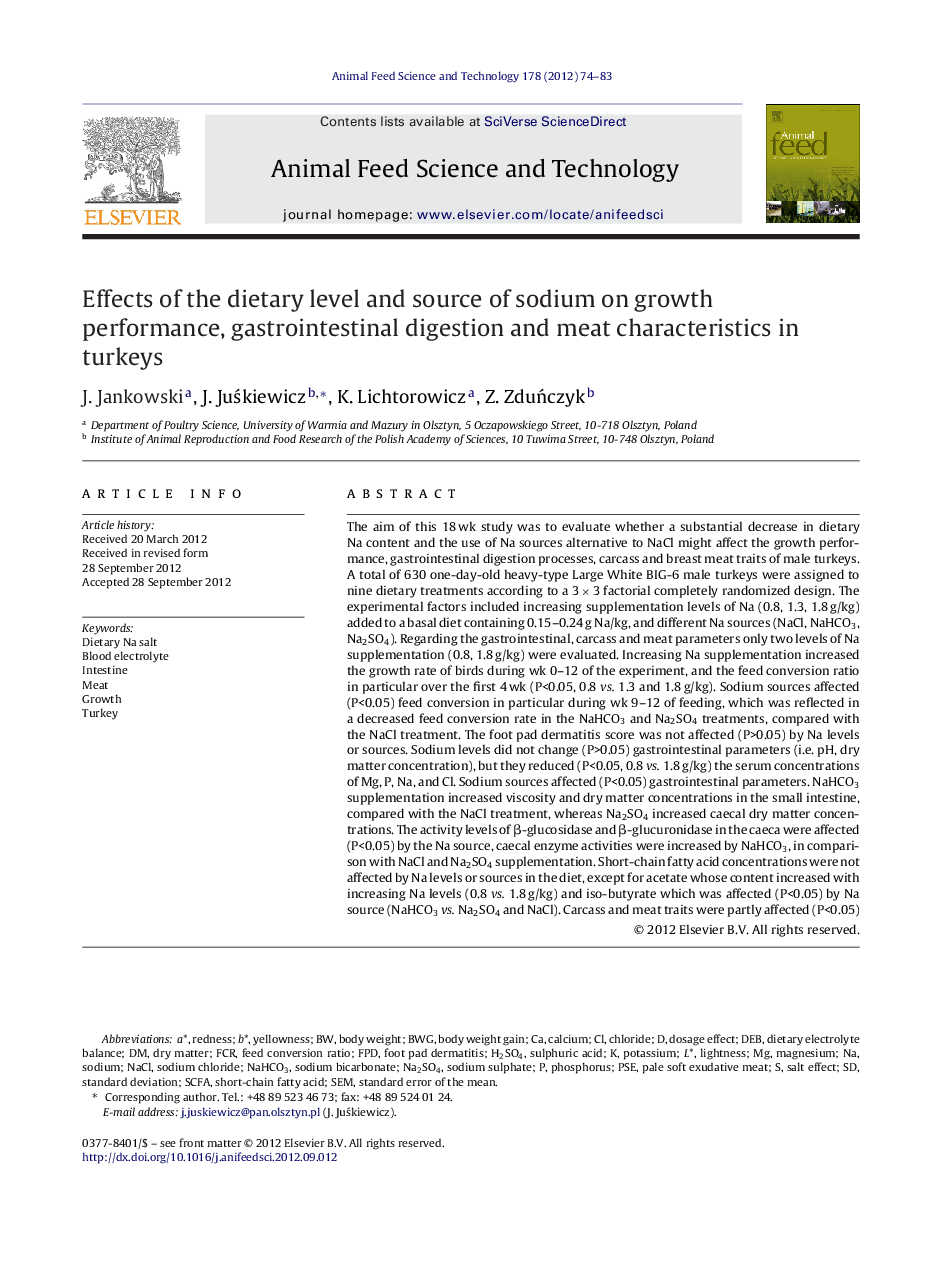| Article ID | Journal | Published Year | Pages | File Type |
|---|---|---|---|---|
| 2419742 | Animal Feed Science and Technology | 2012 | 10 Pages |
The aim of this 18 wk study was to evaluate whether a substantial decrease in dietary Na content and the use of Na sources alternative to NaCl might affect the growth performance, gastrointestinal digestion processes, carcass and breast meat traits of male turkeys. A total of 630 one-day-old heavy-type Large White BIG-6 male turkeys were assigned to nine dietary treatments according to a 3 × 3 factorial completely randomized design. The experimental factors included increasing supplementation levels of Na (0.8, 1.3, 1.8 g/kg) added to a basal diet containing 0.15–0.24 g Na/kg, and different Na sources (NaCl, NaHCO3, Na2SO4). Regarding the gastrointestinal, carcass and meat parameters only two levels of Na supplementation (0.8, 1.8 g/kg) were evaluated. Increasing Na supplementation increased the growth rate of birds during wk 0–12 of the experiment, and the feed conversion ratio in particular over the first 4 wk (P<0.05, 0.8 vs. 1.3 and 1.8 g/kg). Sodium sources affected (P<0.05) feed conversion in particular during wk 9–12 of feeding, which was reflected in a decreased feed conversion rate in the NaHCO3 and Na2SO4 treatments, compared with the NaCl treatment. The foot pad dermatitis score was not affected (P>0.05) by Na levels or sources. Sodium levels did not change (P>0.05) gastrointestinal parameters (i.e. pH, dry matter concentration), but they reduced (P<0.05, 0.8 vs. 1.8 g/kg) the serum concentrations of Mg, P, Na, and Cl. Sodium sources affected (P<0.05) gastrointestinal parameters. NaHCO3 supplementation increased viscosity and dry matter concentrations in the small intestine, compared with the NaCl treatment, whereas Na2SO4 increased caecal dry matter concentrations. The activity levels of β-glucosidase and β-glucuronidase in the caeca were affected (P<0.05) by the Na source, caecal enzyme activities were increased by NaHCO3, in comparison with NaCl and Na2SO4 supplementation. Short-chain fatty acid concentrations were not affected by Na levels or sources in the diet, except for acetate whose content increased with increasing Na levels (0.8 vs. 1.8 g/kg) and iso-butyrate which was affected (P<0.05) by Na source (NaHCO3vs. Na2SO4 and NaCl). Carcass and meat traits were partly affected (P<0.05) by Na source, NaCl supplementation increased breast yield in comparison with NaHCO3, and it decreased L* values, compared with NaHCO3 and Na2SO4 supplementation. Our findings show that a Na deficiency in the diet (0.8 g/kg) decreases the growth rate of turkeys and reduces the efficiency of feed utilisation. Sodium sources alternative to NaCl improve feed utilisation, but they may adversely affect breast muscle traits.
